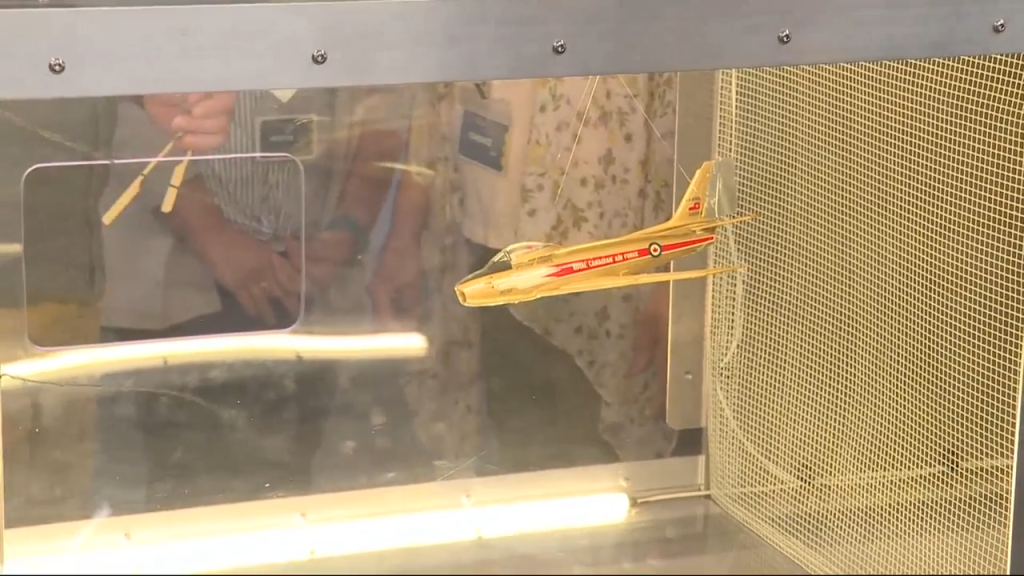Winnipeg’s Royal Aviation Museum gets new wind tunnel

Posted June 11, 2024 9:36 am.
Last Updated June 11, 2024 9:37 am.
At Winnipeg’s Royal Aviation Museum, there is no shortage of historic aircraft to inspire future aviators of a career in the skies.
Now, thanks to the dedicated work of students from the Manitoba Institute of Trade and Technologies (M.I.T.T.), the museum has a brand new state-of-the-art wind tunnel to help further educate the next generation.
“When people come here, they know M.I.T.T. did it. It’s our hope that a whole bunch of students will be inspired,” said Terry Slobodian, the president and CEO of the Royal Aviation Museum of Western Canada
“When it came to augmenting our stem education programs with a win tunnel, they seemed to have all the skills to pull it off and pull it off they did.”
Over the past year, students from three separate programs worked alongside former Boeing engineers constructing this wind tunnel. Capable of achieving air velocity speeds of 60 kilometres an hour.
“A couple of our students were actually finishing up their program and wanted to stay back and continue the project to fruition,” said Jared Miskimmin, the project manager of information communicational technology at M.I.T.T.

M.I.T.T. President and CEO Neil Cooke said the project provided an invaluable experience for their students. By collaborating with different disciplines they gained real-world skills on a real-world project.
“Become more agile in their ways of thinking while working with others, and here we were able to work with three different programs, and that made a major impact on the success of this project,” said Cooke.
“We also have a wing here and you use the string behind it to show how the flow is going around the wing.”
By demonstrating how different shapes and designs influence aerodynamics and airflow, the wind tunnel will provide a visual representation to the thousands of students who visit the museum each year.
“Right now we let them experiment and use that as a springboard, in order to explain the concepts they are learning at school, they get a hands-on experience at the museum,” said Candace Kostna, the museum educator.
Tatjana Drasjovic, one of the engineers who worked on the project, said she was constantly impressed by the creativity and the passion displayed by the students throughout the process.
“I would turn to my colleague Jean, and I said I think my hopes are up. I have hope for the future, it was a very uplifting experience in every way,” said Drasjovic.








